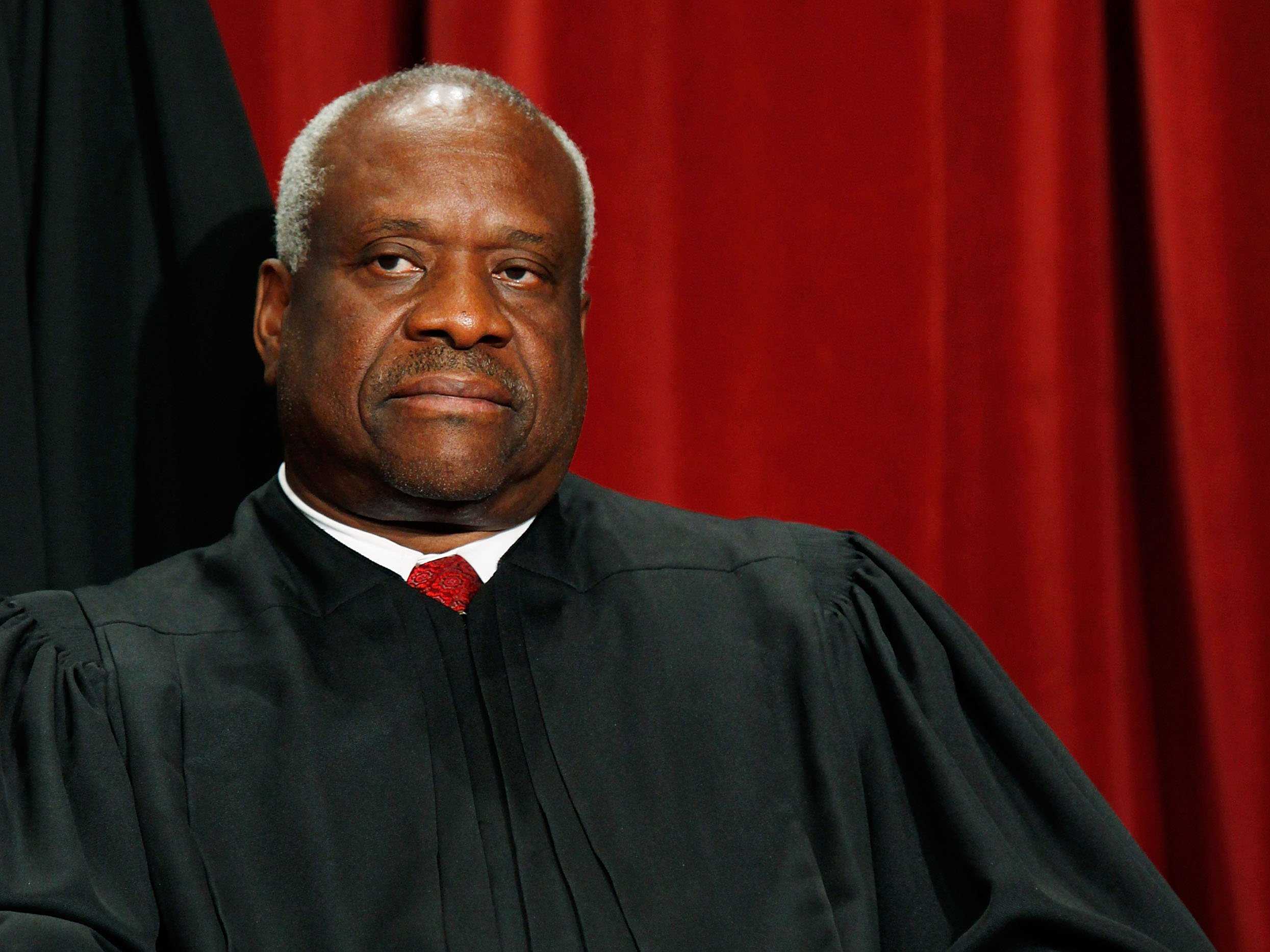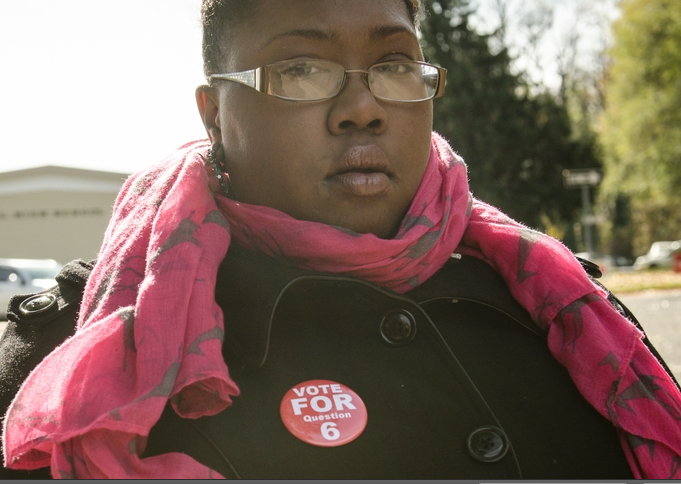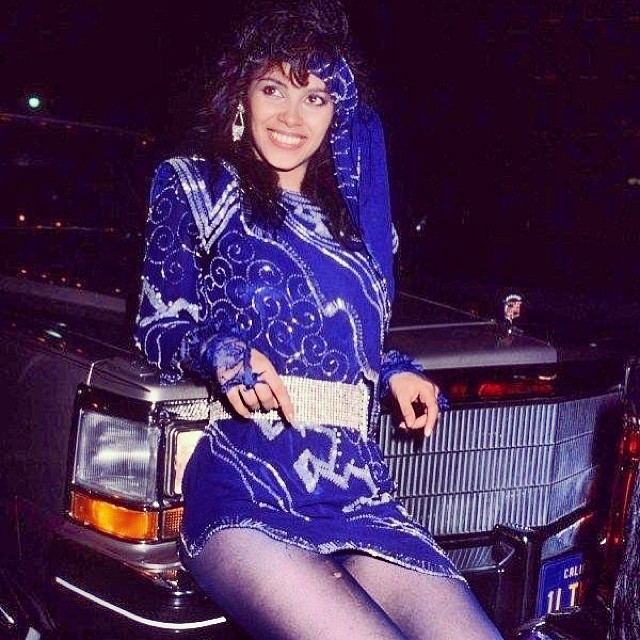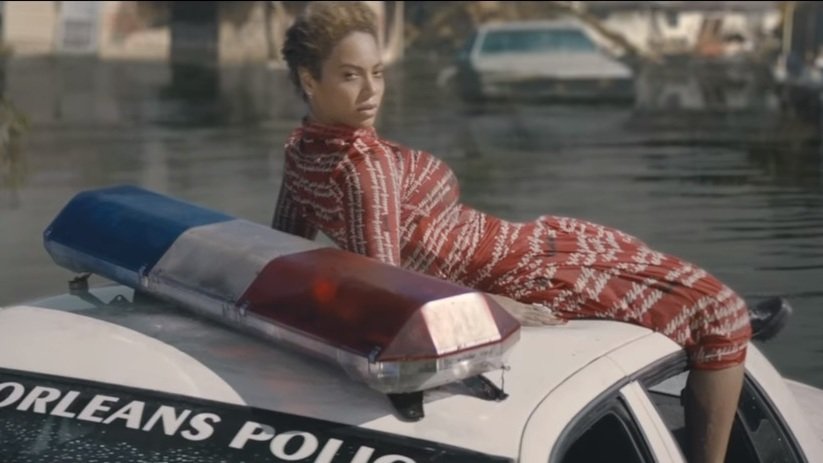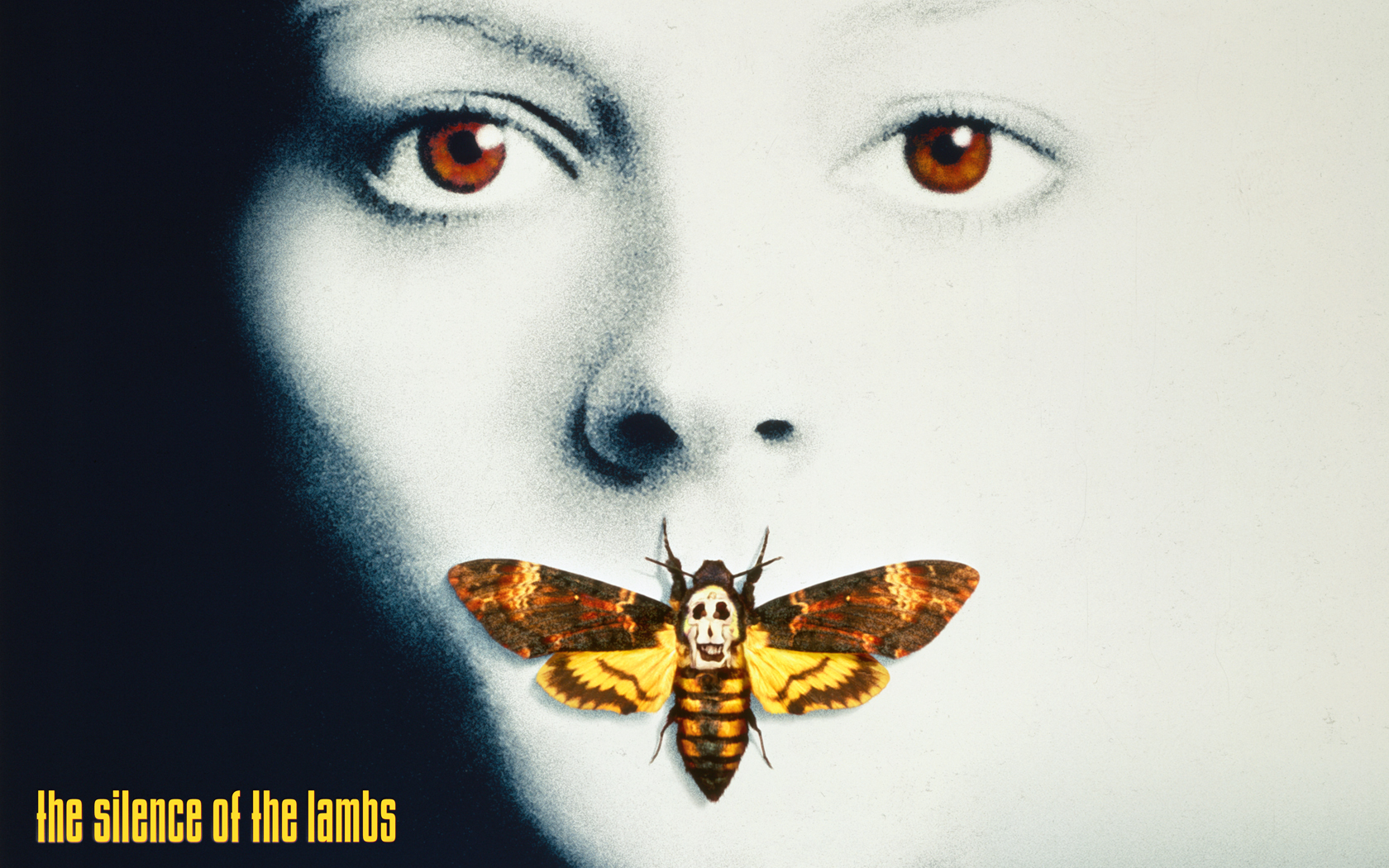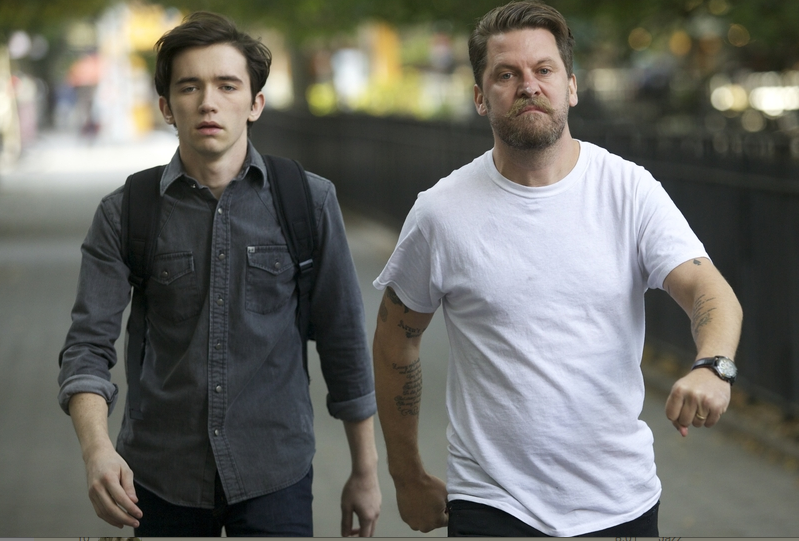I thought this was an interesting conversation, so thought I’d storify it and share it here.
Tag Archives: Noah
Utilitarian Review 2/27/16
News
Folks may have noticed we only had three posts this week. In general, I’ve been distracted with other work and haven’t been pursuing contributors as regularly…or writing as often here as I once did. I’m not sure exactly what that means for the future. Chris Gavaler and Robert Stanley Martin still are committed to posting here weekly, and I still do want to write on occasion. If you want to write here, please contact me (myname at gmail); we’re still running guest posts.
I guess what I’m saying is, we’ve been quieter than usual, and it seems likely that that will continue to be the case unless something changes. Anyway, as always, thanks for reading.
On HU
Me on the New Black, a documentary about the marriage equality campaign in Maryland.
Shreya Durvasula on Walter White as superhero.
Robert Stanley Martin with on sale dates for comics September and October 1952.
Utilitarians Everywhere
At the Guardian I wrote about Deadpool R-ratings, and how superheroes are about wanting/not wanting to grow up.
I took part in the Public Books roundtable on women directors, writing about the Descent and rape revenge for women.
At Quartz I wrote about
—what African-Americans should get a biopic after Jesse Owens.
—how we need to reduce Supreme Court tenures to politicize the court.
At the Establishment I wrote about
—Taylor Swift and how we don’t expect men to step up for Kesha.
—the Mad Max series and how women equal civilization and men gotta ramble.
At Splice Today I wrote about
—Bowie, Lori Maddox, and listening to victims even when they say they’re not.
—Huffpo and the authenticity of hackwork.
At the Chicago Reader
—I previewed Typeforce, a typeface art show.
—I did a little review of indie band Sunflower Bean.
Other Links
Greg Howard on how SB Nation published a disastrous piece on Daniel Holzclaw.
David Perry on disability inspiration porn.
Yasmin Nair/a> argues that freelancers shouldn’t write for free.
The New Black
This first ran on The Dissolve.
____________________
“It is my people. I’m a sistah in the movement,” Sharon Lettman-Hicks says early in The New Black. She spells it out herself: “S-I-S-T-A-H.” Lettman-Hicks is the executive director and CEO of the National Black Justice Coalition, and the movement she’s talking about is the push for LGBT rights. When she talks about that movement in language that recalls the black civil-rights struggle, it’s because she sees them as one and the same. As she says, gay marriage is part of “the unfinished business of black people being free.”
As The New Black notes, this isn’t always the way the media frames the relationship between the black and gay communities. After the 2008 election, in which Barack Obama won the presidency and California passed a ballot referendum making gay marriage unconstitutional, black voters, seen as religious and socially conservative, were blamed for the loss.
The New Black, which focuses on the 2012 ballot referendum on gay marriage in Maryland, is committed to showing that the easy opposition between blacks and LGBT is a false one. In part, it tackles this by foregrounding black, LGBT people, such as Irene Huskens, a police officer who tearfully talks about marrying her partner so she and their children can be a family. But like Lettman-Hicks (who is straight), the film insists that gay marriage and the civil-rights struggle are continuous issues, so the former is central to the black experience in general. One preacher, speaking from the pulpit on election day, tells his congregation that Question 6, the Maryland gay-rights proposition, is a “referendum on the church”—a moral test of the black community’s commitment to equality for all.
Obviously, not all black preachers, and not all black people, feel that way. The New Black is unabashedly pro-gay marriage, but it treats the other side respectfully. Opponents of gay marriage in the community are given their say. Pastors talk about the Bible. A congregant stands up to explain that being gay isn’t a civil-rights issue, because unlike being black or female, it’s a matter of choice. One of Lettman-Hicks’ house guests worries out loud about his son being corrupted by the homosexual agenda.
Including these voices is a painful, but, the film implies, necessary step, not for a balanced presentation, but because the community that includes black and LGBT people also includes homophobia. In fact, homophobia and queerness often exist together, side by side, or pew by pew.
At one point, The New Black takes a detour to trace the career of Tonéx, a highly successful gospel performer who came out in 2009 on The Lexi Show (“Have you struggled with homosexuality?” Lexi asks. “It wasn’t a struggle,” Tonéx responds. Cut to Lexi looking like someone has slapped her with a carp.) The material about Tonéx is fascinating, but initially seems to have little directly to do with the gay-marriage question in Maryland—until the film shows several gay Question 6 activists talking effusively about Tonéx, and how he’s represented not just the out queer community, but all the closeted queer people in all the African-American church choirs. As Anthony Heilbut chronicles in his 2012 essay collection The Fan Who Knew Too Much, closeted LGBT people, from James Cleveland to Alex Bradford to Ruth Davis, have been central to the African-American gospel tradition, and so to the African-American church. Whether acknowledged or not, they’re as much a part of conservative black church life as they are of any other part of the black experience. Love them or hate them, they’re family.
So the title, The New Black, has a double—or triple—meaning. It refers to the LGBT community, which can be seen as a new civil-rights movement. It refers to a new black identity, which can include LGBT people. And it also, ironically, refers to the fact that there is no new black; black identity and LGBT identity have always been part of the same community. When Question 6 passes, Huskens tearfully kisses her soon-to-be-wife and hugs their children. Huskens’ mother-in-law-to-be struts across the kitchen, looks in the camera, and exclaims, “Yes we can!” There couldn’t be a clearer statement that the black family and the LGBT family are one and the same.
Utilitarian Review 2/20/16
On HU
Featured Archive Post: An interview with romance/sf novelist Bee Ridgway.
Matthias Wivel on Dan Clowes’ Patience.
Me on Beyoncé, Bill Gates, and anti-capitalism.
mouse gives a roundup of the best furry comics today.
Madeleine Gavaler on Lady Macbeth endorsing Hillary Clinton.
Robert Stanley Martin with on sale dates of comics July/August ’52.
Utilitarians Everywhere
At the Guardian I wrote a tribute to Vanity and the Last Dragon.
At the Establishment I surveyed the gay history of country music.
At Splice Today I wrote about
—why, contra Chait, progressives shouldn’t root for Trump.
—why SC should be moved ahead of NH on the Democratic primary calendar.
Other Links
Talia Jane on working at Yelp! and being unable to afford food.
Andy Green on the awesomeness of Bill Withers.
Jessica Luther on why sports sites handle reporting on sexual assault so badly.
Black Bill Gates
“I just might be a black Bill Gates in the making,” Beyoncé declares in her new video “Formation.” It’s an unapologetic, swaggering declaration that she is a businesswoman and a power to be reckoned with. That’s not an unusual boast for the singer—her 2013 video for “Partition” opens with her languidly ordering about a (notably white) servant. But it does clash a little with “Hymn to the Weekend“, the video she released only a few weeks before in collaboration with Coldplay.
As I discussed last week, “Hymn to the Weekend” is set up as an Orientalist tourist video. Coldplay singer Chris Martin drives around in a cab, staring out at Mumbai, and relishing exotic displays of street art and the high spirits of street kids. India is figured as exotic and exciting. But it’s also presented as poor, earthy, real, visceral. For the video, the people of India are fun to stare at because they are not Bill Gates, and because they are outside the logic of the capitalist west. Here, the video proclaims, as Martin moans on about feeling drunk and high, is an ecstasy that isn’t about money and fame. It’s an experience you cannot purchase, even with your tourist dollars. It must be lived.
Though Beyoncé is dressed up as a glamorous Bollywood singer, she doesn’t change that narrative. She’s certainly opulent—but that’s figured as a mystic, distant opulence, set against spiritual landscapes, not as a wealth obtained through sweat and smarts. She exploits Orientalist tropes to make herself exotic and exicting, but those tropes end up defining and limiting her. In joining with Coldplay to make herself a Orientalist mystical totem, she gives up her role as entrepreneur.
She takes it back in “Formation,” though. In her own video, Beyoncé isn’t stuck in any one role. Instead, the video, set in New Orleans, puts her in a range of identities, from upscale buttoned up gentlewoman to street-level twerker, from historical to present-day. “Through this reckless country blackness, she becomes every black southern woman possible for her to reasonably inhabit, moving through time, class, and space,” Zandria Felice Robinson writes. Beyoncé is both marginal and empowered, both looker and spectacle.
It’s important that that the culture that inspires the video is treated with much more respect than in the Coldplay collaboration, in no small part because the community in question is one that Beyoncé identifies with. This isn’t just a matter of presenting herself as part of Southern black culture; it’s also about knowledge and respect. “Hymn to the Weekend” could have gotten a Bollywood star to appear alongside Beyoncé, but no one cared enough to bother making that happen. As a result, the video feels like something done to, rather than in collaboration with, Mumbai and its culture. In contrast, “Formation” includes New Orleans bounce performers Messy Mya and Big Freedia. It honors queer dancers and rappers whose style has been much imitated in the mainstream, but whose personal artistry is rarely acknowledged there.
“Formation” also differs from “Hymn to the Weekend” in that it presents marginalization not as exotic spectacle, but as struggle. The most instantaneously famous images from the video are of a black child dancing in front of an ominous line of police, and of Beyoncé lying on a sinking patrol car as the video’s close. The New Orleans presented in the video is not a tourist destination. It’s a city under siege, both by neglect in the wake of Katrina, and by state violence. There is joy there, but there’s also an insistence that the joy is not meant to be comfortably viewed from a cab. It’s an act of defiance.
And part of that defiance is the video’s deliberate, amused consumerism. “I’m so reckless when I rock my Givenchy dress/I’m so possessive so I rock his rock necklaces.” Beyoncé is Bill Gates; she wants, or already has, power, wealth, glamour, respect, and brains. She’s a businesswoman, which means she’s the entrepreneur making the video, not just the person the video is about.
Beyoncé’s been criticized at times for embracing capitalism and the iconography of wealth. But the “Hymn to the Weekend” video is a reminder that capitalism isn’t just about money. It’s about inequities of power, about who is owned, and about who gets to be the one who does the owning. The children Coldplay watches in Mumbai don’t get to say, with Beyoncé in “Formation”, “I’m so possessive,” because they aren’t seen as having their own desires. They are treated as the things to be consumed, not the consumers.
“Earned all this money, but they never take the country out me,” Beyoncé declares. Through double consciousness, she can be Bill Gates and herself at the same time. Poverty isn’t natural or fun. The people who don’t have power, want power, and are justified in wanting it. To tell them they should be different in kind from the capitalists is just what capitalism, and capitalism’s police force, always tells them. Beyoncé, at least in “Formation,” isn’t buying it.
Utilitarian Review 2/13/16
On HU
Featured Archive Post: Emily Thomas on new text games.
Chris Gavaler meditates on auteurism in superhero comics.
Review of corporate training goof Welcome to the Jungle.
Review of Jason DaSilva’s doc about his ms, When I Walk.
Review of Gavin McInnes’ crappy How To Be a Man.
Robert Stanley Martin with on sale dates of comics from May/June 1952.
Utilitarians Everywhere
At Quartz I wrote about:
—Pride and Prejudice and Zombies and how making your female characters stronger makes them weaker.
—how Silence of the Lambs is scared of Clarice. (it’s the 25th anniversary today.)
At the Guardian I wrote about:
—the Fifth Wave and colonialism against white people.
—Man in the High Castle, 11.22.63, and how we love counterfactual stories.
At Playboy I wrote about how cassette tapes never went away.
At the Establishment I wrote about:
—A.O. Scott and art as criticism as art as criticism.
—Trump, torture, and reparations.
At Splice today
—I wrote about what would happen if Rubio won NH. which didn’t happen, as it turns out.
—I asked Bernie Sanders, fool or liar?
Other Links
Parker Molloy on problems with Kenneth Zucker’s therapies for trans youth.
Juiia Serano on the same.
How to Be a Man
This first ran on the Dissolve.
________
Nothing about the description of How To Be A Man induces confidence. Mark (Gavin McInnes), an ex-comedian with a pregnant wife, discovers he has breast cancer and decides to record life lessons for his son-to-be, teaching him how to fight, drink, pick up girls, and otherwise do stereotypical man-things. He recruits Bryan (Liam Aiken), the 22-year-old son of an old flame, to videotape him. The two bond over guy humor and recreational drug use, eventually teaching each other—wait for it—how to be a man.
That sounds pretty dreadful in concept, but in execution, it’s worse. This film brings a resolute lack of wit and a numb stupidity to stereotypical concepts like mid-life crises and regressive gender stereotypes. For all its burble about toughness, How To Be A Man doesn’t even have the elementary courage of its own hackneyed formal conceit. The film is supposed to be structured around Mark’s video transmissions to his son, a concept that seems to call for a found-footage approach—or at least for some sort of play with the space between what Bryan records and what the audience sees. But the film within a film is all but ignored in the interest of running through a series of stupid setpieces: Mark quits his advertising job in an excess of egotistical bombast. Mark’s wife calls him a child. Mark picks up girls. All with a minimum of invention, and a maximum of banal crudity.
The crudity is supposed to be winning. A scene where Mark tells Bryan (loudly, with hand motions) how to perform oral sex gets a standing ovation from the assembled bar patrons, who are presumably meant to cue the viewing audience that this is some wild, awesome writing and acting. The truth, unfortunately, is that the writing is flabby and tedious, and McInnes’ delivery has little charisma or charm. The film is like being stuck in an elevator with a boorish drunk for an hour and a half. The fact that the boorish drunk gives a wink every so often to let viewers know that yes, boorish drunks are really irritating, doesn’t salvage it; it has the reverse effect.
Most of the boor’s spouting has to do, as the title says, with being a man—how to be tough, how to wow women, how to take risks and follow a dream. Much of Mark’s advice is patently poisonous, and he just about wrecks his life, which would seem to undercut his status as testosterone guru. But it doesn’t. Instead, the good things Mark does are part of being a man; the bad things are simply a failure to be manly enough. Thus, Mark’s advice to act like a dick and threaten people lets Bryan jettison his uptight roommate, whose main, unforgivable sin is being kind of freaked out that Bryan was using heroin in their apartment. Mark’s fashion advice leads Bryan to ditch his funky hat and appealingly schlubby clothes for bland preppy blah, à la Ally Sheedy’s transformation at the end of The Breakfast Club.
The path to being a man, then, is narrow and fraught: No silly hats, no expressing interest in astrology, no drinking wine instead of beer. Certainly, no homosexuality: The film’s one gay character is an abusive cocaine dealer, and physical affection between men is treated as a scandalous joke. How To Be A Man isn’t so much a how-to guide as a frightened list of anxious proscriptions.
The source of that anxiety isn’t hard to locate. Both Bryan and Mark at different points suffer humiliating beatings at women’s hands, and beyond that lingers Mark’s fear that the womanish illness of breast cancer has doomed him. Both the beatings and the breast cancer are played for laughs, not because the film sees fear of femininity as ridiculous, but because men with women’s diseases, or men beaten up by women, are feminized, and therefore funny. A morbid, snickering, terrified misogyny runs through the film like a sad trail of fart jokes. Toward the end, Bryan, following Mark’s dictates, imagines the girl he’s trying to pick up as disgusting and diseased; loathing women gets him sex, and makes him a man. Masculinity appears, for the filmmakers, to be based on fear, hate, intolerance, and mediocre bathroom humor. In short, How To Be A Man is an insult to men, to women, and to everyone else.

